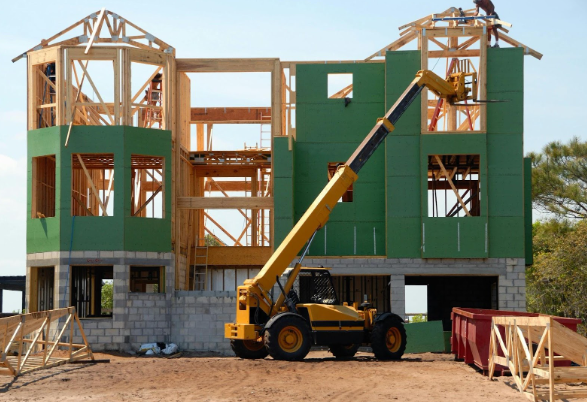Why Sustainable Materials Matter in Reducing the Environmental Impact of Construction
- Vanshika Thareja

- Nov 3
- 4 min read
The construction industry has long been a major contributor to environmental degradation. From energy-intensive production processes to high volumes of waste and emissions, traditional construction practices often carry a heavy ecological footprint. As the world grows more conscious of climate change and resource scarcity, the demand for greener alternatives continues to rise. Sustainable materials have emerged as a cornerstone of this transformation, offering an effective way to mitigate the environmental toll of building projects while still delivering durability, performance, and aesthetic appeal.
Incorporating eco-friendly materials into construction isn’t just a trend; it’s a necessity for shaping a livable future. Whether constructing residential homes or large-scale commercial developments, the right materials can make a meaningful difference.
The Role of Ethically Sourced Building Products
Sustainable construction begins with the materials chosen at the project’s inception. Conventional materials like concrete and steel, while durable, require significant energy to produce and emit substantial greenhouse gases. In contrast, options like reclaimed wood, bamboo, recycled steel, and responsibly harvested timber offer lower environmental impacts.
One increasingly popular choice is timber. This type of wood is harvested under practices that promote forest regeneration, wildlife protection, and reduced emissions. Choosing such timber ensures that construction projects are not contributing to deforestation or habitat loss. Using ethically sourced timber allows builders to achieve both structural strength and eco-conscious design, while earning points toward green certifications like LEED (Leadership in Energy and Environmental Design). It supports forestry operations that respect indigenous rights and use sustainable land management techniques.
Life Cycle Thinking
The environmental benefits of sustainable materials extend well beyond the construction phase. Life cycle assessments (LCAs) provide a comprehensive view of a material's environmental impact, from extraction to disposal. Sustainable materials tend to score favorably in LCAs because they require less energy during production, emit fewer pollutants, and are often recyclable or biodegradable at the end of their useful life.
Recycled concrete aggregates (RCAs) reduce the need for virgin gravel and prevent construction debris from ending up in landfills. Likewise, insulation made from sheep wool or cellulose instead of synthetic foam lowers carbon emissions and avoids releasing toxic chemicals into the air.
Considering the entire life cycle of each material helps developers reduce their project's total carbon footprint and make decisions based on long-term sustainability rather than short-term costs.
Energy Efficiency and Thermal Regulation
The choice of construction materials directly affects a building’s energy consumption. Well-insulated walls, roofing, and windows made from sustainable composites can drastically reduce the need for artificial heating and cooling. Materials with high thermal mass, such as adobe, rammed earth, or even certain natural stone types, absorb and store heat energy, releasing it slowly to stabilize indoor temperatures.
Incorporating green roofs, recycled insulation, and high-performance glass can lead to more energy-efficient buildings that comply with modern environmental standards. Sustainable materials often go hand-in-hand with passive design strategies, making it easier for architects and engineers to optimize energy use without relying solely on mechanical systems.
Reducing Construction Waste and Supporting Circular Economies
Construction and demolition activities generate millions of tons of waste every year. A significant portion of this waste, such as concrete chunks, wood scraps, and metal offcuts, can be reused or recycled if managed properly. Sustainable materials, those designed with modularity or prefabrication in mind, make it easier to limit waste and promote efficient resource use.
The circular economy model encourages the reuse, refurbishment, and recycling of materials rather than following a linear “take-make-dispose” pattern. Modular construction systems using sustainably sourced panels and fittings can be disassembled and repurposed across multiple builds.
Healthier Indoor Environments
Sustainable materials don’t just benefit the planet; they promote human health. Many traditional construction materials, like paints, adhesives, and vinyl flooring, contain volatile organic compounds (VOCs) that can compromise indoor air quality. These substances have been linked to respiratory issues, skin irritation, and even long-term illnesses.
Eco-friendly materials are often free from toxic additives and designed with occupant well-being in mind. Natural flooring materials, low-VOC finishes, and formaldehyde-free insulation all contribute to safer and more comfortable living or working spaces. This focus on indoor environmental quality is important in settings like schools, hospitals, and homes, where people spend a significant portion of their time.
Economic and Reputational Benefits for Builders
Sustainable construction isn’t just good for the environment; it makes financial sense as well. Buildings constructed with sustainable materials often enjoy lower operating costs due to energy savings and reduced maintenance. Many regions offer incentives, tax credits, or expedited permitting for projects that meet green building standards.
From a business standpoint, adopting sustainable practices enhances a builder’s reputation and appeal. More clients, in the commercial and government sectors, are prioritizing environmental responsibility in their procurement processes. Projects that integrate eco-conscious materials stand out in an increasingly competitive marketplace.
From lowering carbon emissions to reducing waste, improving indoor health, and supporting responsible sourcing, every material used in a project has consequences that ripple far beyond the jobsite. Whether it’s ethically sourced wood, recycled metal, or natural insulation, each sustainable choice helps pave the way toward a greener, healthier future for all.





Comments